The searing photograph of a Salvadorian man and his 23-month-old daughter laying face down in shallow water along the bank of the Rio Grande was captured by journalist Julia Le Duc on 24 June. The image, which was published by Mexican newspaper La Jornada, highlighted the perils faced by mostly Central American migrants fleeing violence and poverty and hoping for asylum in the United States. The man was found with his black shirt hiked up to his chest and his daughter tucked inside. Her arm was draped around his neck suggesting that she clung to him in her final moments. [caption id=“attachment_6892701” align=“alignnone” width=“825”] The bodies of Salvadoran migrant Oscar Alberto Martínez Ramírez and his 2-year-old daughter. AP[/caption] According to Le Duc, Óscar Alberto Martínez Ramírez (the man in the picture) a citizen of El Salvador, was frustrated because his family was unable to present themselves to US authorities and request asylum. He swam across the river on 23 June with his daughter, Valeria. This, is one of the many images which photojournalists have taken over the years depicting global crises. Here’s a look at other such images: Crying Girl on the Border (2018) The viral image of a crying Honduran child at the US-Mexico border, which bagged the 2019 World Press Photo contest’s Photo of the Year prize, was taken by Pulitzer Prize-winning photographer for Getty Images John Moore. [caption id=“attachment_6891941” align=“alignnone” width=“825”]
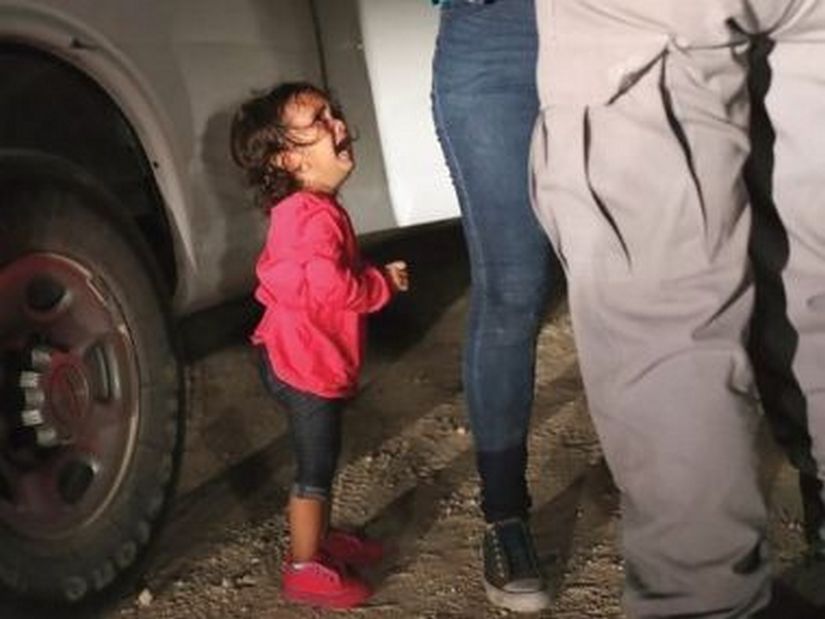 The Crying Girl on the border. AP[/caption] The winning photo depicted a crying two-year-old child while her mother, a Honduran asylum-seeker was detained by US border authorities at the US-Mexico border in McAllen, Texas. The image created an outrage over US president Donald Trump’s administration’s policy of separating children from their parents — part of its “zero tolerance” stance towards people who illegally cross into the United States. The photograph of the girl appeared in a much controversial cover of TIME magazine where she could be seen wailing in front of a visibly angry Trump. Even though this image reflected Trump’s hardline push on immigration, it was later determined that the child and mother were held together at a processing centre and released weeks later, pending a future asylum hearing,
HuffPost reported. The World Press Photo jury felt the image was nonetheless powerful enough to merit the prestigious award. The Girl in the Blue Bra (2011) The Girl in the Blue Bra referred to the image of a veiled young Egyptian woman, who participated in the Tahrir Square protests in 2011 in Opposition to the military rule of Egypt’s Supreme Council of the Armed Forces (SCAF). [caption id=“attachment_6891951” align=“alignnone” width=“825”]
The Crying Girl on the border. AP[/caption] The winning photo depicted a crying two-year-old child while her mother, a Honduran asylum-seeker was detained by US border authorities at the US-Mexico border in McAllen, Texas. The image created an outrage over US president Donald Trump’s administration’s policy of separating children from their parents — part of its “zero tolerance” stance towards people who illegally cross into the United States. The photograph of the girl appeared in a much controversial cover of TIME magazine where she could be seen wailing in front of a visibly angry Trump. Even though this image reflected Trump’s hardline push on immigration, it was later determined that the child and mother were held together at a processing centre and released weeks later, pending a future asylum hearing,
HuffPost reported. The World Press Photo jury felt the image was nonetheless powerful enough to merit the prestigious award. The Girl in the Blue Bra (2011) The Girl in the Blue Bra referred to the image of a veiled young Egyptian woman, who participated in the Tahrir Square protests in 2011 in Opposition to the military rule of Egypt’s Supreme Council of the Armed Forces (SCAF). [caption id=“attachment_6891951” align=“alignnone” width=“825”] The Girl in the blue bra. Reuters[/caption] In the image, the girl’s face is covered, her torso bare except for her blue bra; she is just a few seconds away from being kicked by a soldier. The picture became a visual symbol of abuse of power by the Egyptian military. It also depicted the cry of several thousand Egyptian women who marched in the country’s capital demanding the end of military rule. It sparked widespread national and global reactions from individuals and the media. “The horrifying picture fills whoever sees it with nausea. No one could believe that this could happen to an Egyptian after ten months of a revolution that started in defense of dignity,” commentator
Fahmy Howeidy had said. “This picture has become an international scandal that puts any Egyptian to shame,” he said in al-Shorouk newspaper. Former US secretary of state
Hillary Clinton had said in a speech at Georgetown University that the image showed the “systematic degradation of Egyptian women which dishonors the revolution, disgraces the state and its uniform, and is not worthy of a great people”. Alan Kurdi (2015) During Summer of 2015, Turkish photojournalist Nilufer Demir, while covering the European migrant crisis, had taken a picture of three-year-old Syrian boy Alan Kurdi lying dead on the beach of Bodrum, Turkey. [caption id=“attachment_6891971” align=“alignnone” width=“825”]
The washed up body of Alan along the shore. Reuters[/caption] Kurdi drowned on 2 September, 2015 in the Mediterranean Sea. His family were Syrian refugees trying to enter Europe amid the refugee crisis. In the early hours of 2 September, Kurdi and his family boarded a small rubber inflatable boat, which capsized five minutes later after they left Bodrum. Sixteen people were on the boat, which was designed for a maximum of eight people. They were reportedly trying to reach the Greek island of Kos, about four kilometres from Bodrum. The photograph of Alan’s body washed up along the ashore — half in the sand and the other half in the water; with sneakers on his feet — quickly spread around the world, prompting international responses. Alan, his older brother Ghalib and his mother Rihanna all drowned, joining the list of more than 3,600 other refugees who lost their lives in the eastern Mediterranean in 2015, according to
TIME. Omran Daqneesh (2016) Photographer and media activist Mahmoud Raslan had taken a picture of a small boy, sitting alone coated with dust and encrusted blood, his feet barely touching the ground and a look of bewilderment on his face, as if gauging the mood of Syria. [caption id=“attachment_6892001” align=“alignnone” width=“825”]
File image of Omran. Reuters[/caption] The boy, identified as five-year-old Omran Daqneesh, was pulled from a damaged building after he being injured in a military strike on the rebel-held Qaterji neighbourhood, The New York Times reported. He was one of 12 children under the age of 15 who were treated on that day. But some images strike a particular nerve, Omran’s is such. Within minutes of being posted by witnesses and journalists, a photograph and a video of Omran began surfacing on social media. Omran — like Alan Kurdi, the Syrian toddler who drowned in September, 2015 on a Turkish beach, brought new attention to the thousands of children killed and injured during five years of war and the inability of global powers to stop the carnage. The Vulture and The Little Girl (1993) The photograph of a frail-famine stricken Sudanese boy, initially mistaken for a girl, who had collapsed on the ground with a vulture eyeing him, was captured by Kevin Carter which was featured at The New York Times on 26 March, 1993. [caption id=“attachment_6892011” align=“alignnone” width=“825”]
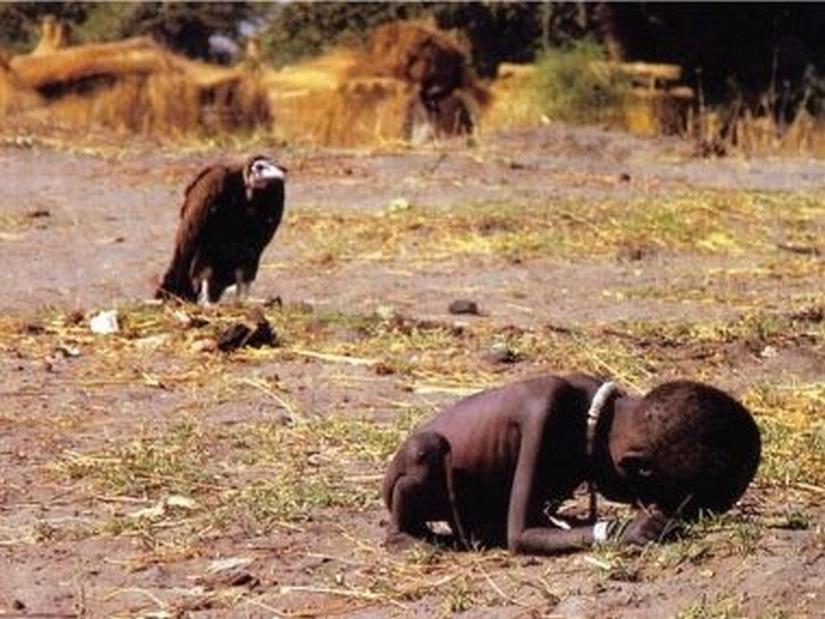 The Vulture and the Girl. AP[/caption] The child reportedly was struggling to reach a food center set up by the United Nations in Avod, South Sudan. After selling the picture to The New York Times, Carter was heavily criticised for not rescuing the boy, even though he relented that the boy had recovered and manged to reach the UN centre. Four months after receiving the Pulitzer Prize for Feature Photography, Carter took his life in 1994, “haunted” by the memories of the famine in Sudan . He died of carbon monoxide poisoning on 27 July, 1994, at the age of 33. South African Anglican cleric and then Archbishop Emeritus of Cape Town, Desmond Tutu, wrote of Carter: “And we know a little about the cost of being traumatised that drove some to suicide, that, yes, these people were human beings operating under the most demanding of conditions.” Oklahoma City Bombing (1995) Charles Porter had captured the aftermath of the 1995 bombing of the Alfred P Murrah Federal Building in Oklahoma City, US. The explosion killed 168 people, including one-year-old Baylee Almon, the child in Porter’s picture. [caption id=“attachment_6892021” align=“alignnone” width=“825”]
The Vulture and the Girl. AP[/caption] The child reportedly was struggling to reach a food center set up by the United Nations in Avod, South Sudan. After selling the picture to The New York Times, Carter was heavily criticised for not rescuing the boy, even though he relented that the boy had recovered and manged to reach the UN centre. Four months after receiving the Pulitzer Prize for Feature Photography, Carter took his life in 1994, “haunted” by the memories of the famine in Sudan . He died of carbon monoxide poisoning on 27 July, 1994, at the age of 33. South African Anglican cleric and then Archbishop Emeritus of Cape Town, Desmond Tutu, wrote of Carter: “And we know a little about the cost of being traumatised that drove some to suicide, that, yes, these people were human beings operating under the most demanding of conditions.” Oklahoma City Bombing (1995) Charles Porter had captured the aftermath of the 1995 bombing of the Alfred P Murrah Federal Building in Oklahoma City, US. The explosion killed 168 people, including one-year-old Baylee Almon, the child in Porter’s picture. [caption id=“attachment_6892021” align=“alignnone” width=“825”]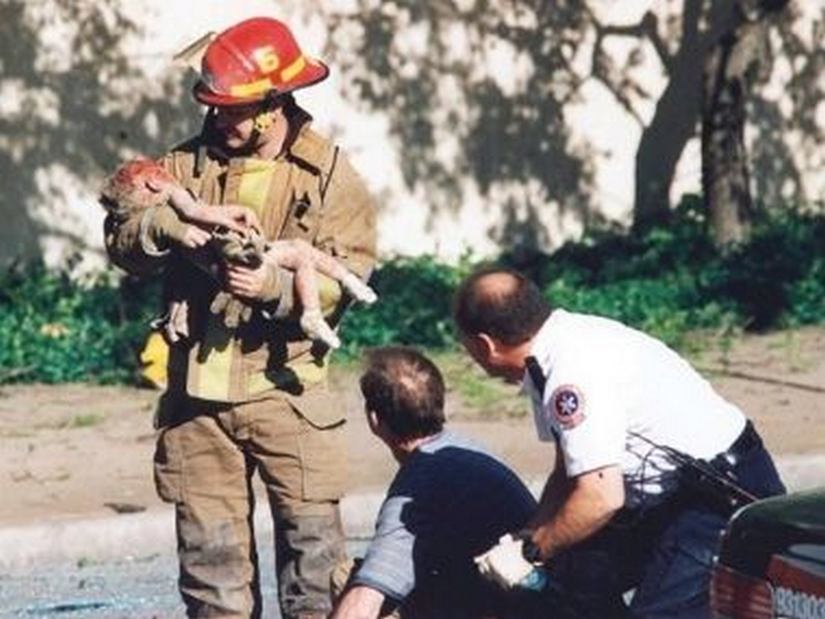 Oklahoma city bombing. Reuters[/caption] Porter won the Pulitzer Prize for Spot News Photography in 1996. Porter gave the credit to 1982 Pulitzer winner John White of Chicago for advising him to “keep a loaded camera in my car at all times”. Porter’s camera was on the back seat when he went to retrieve it on the morning of the bombing, according to National Herald.
Oklahoma city bombing. Reuters[/caption] Porter won the Pulitzer Prize for Spot News Photography in 1996. Porter gave the credit to 1982 Pulitzer winner John White of Chicago for advising him to “keep a loaded camera in my car at all times”. Porter’s camera was on the back seat when he went to retrieve it on the morning of the bombing, according to National Herald.
In the image of The Girl in the Blue Bra, the girl’s face is covered, her torso bare except for her blue bra; she is just a few seconds away from being kicked by a soldier.
Advertisement
End of Article


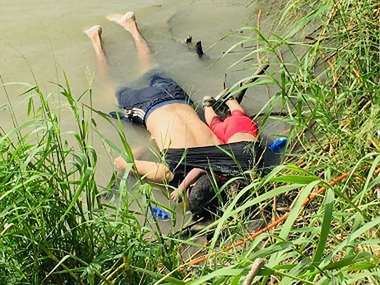)
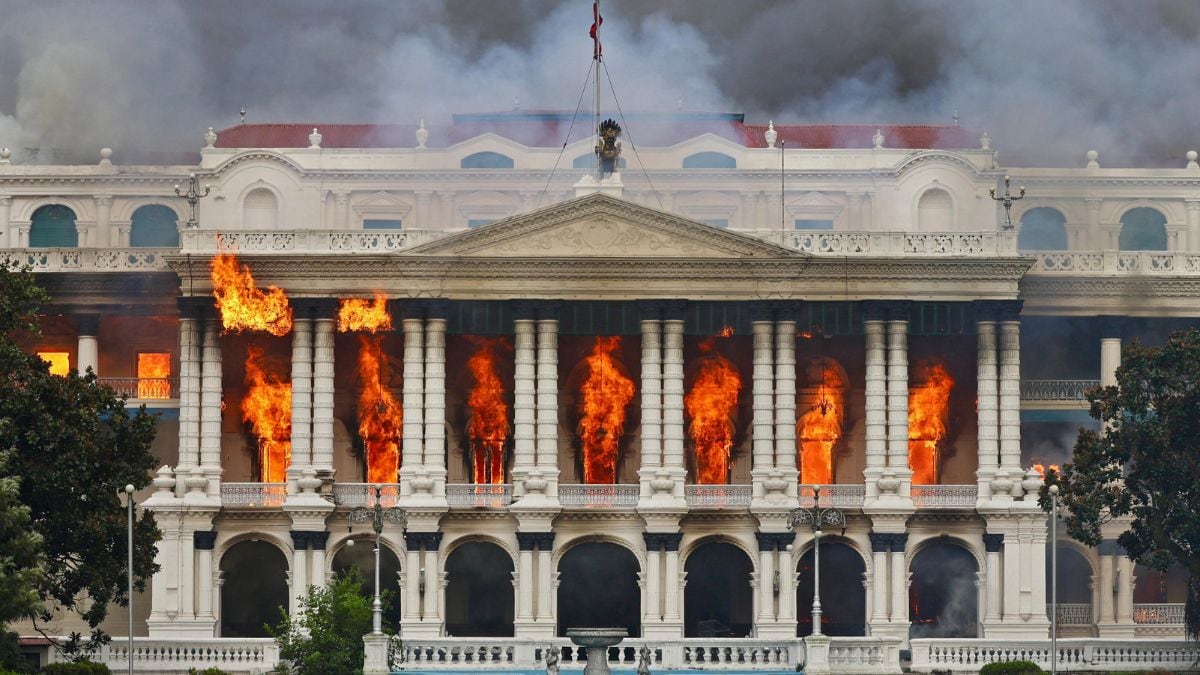
)
)
)
)
)
)
)
)



